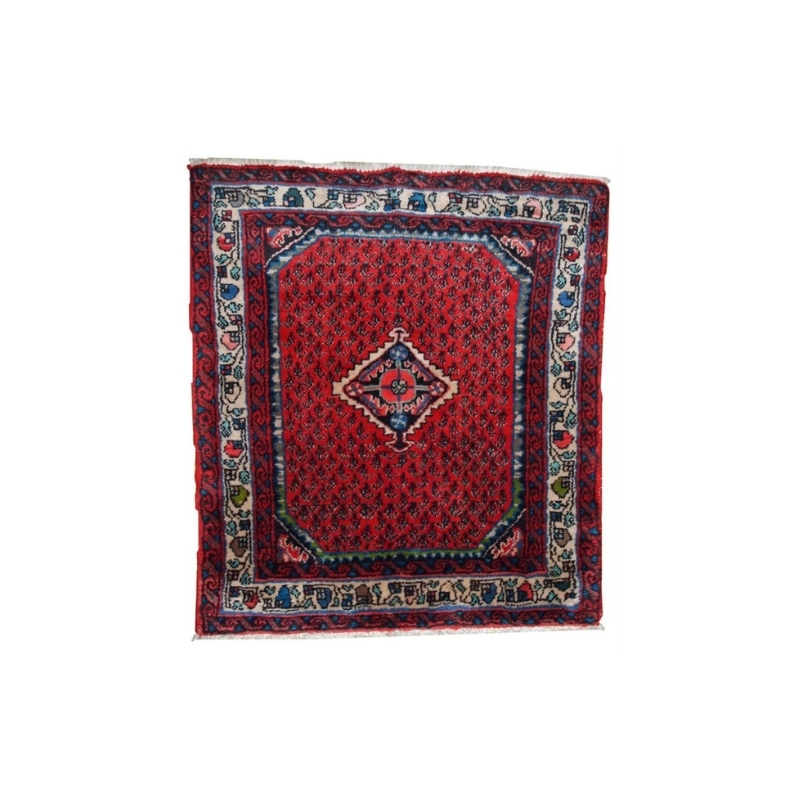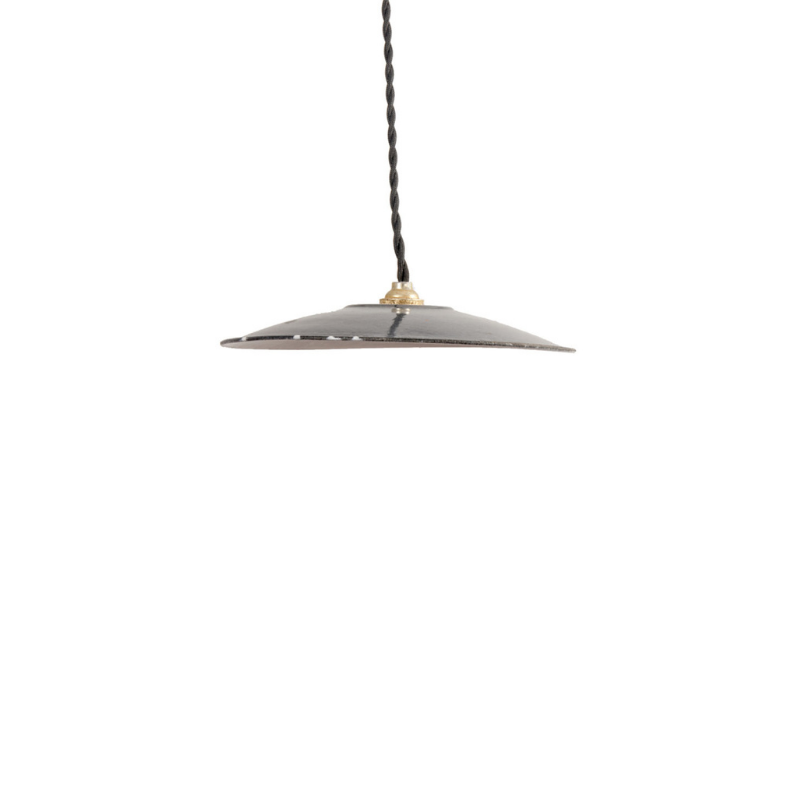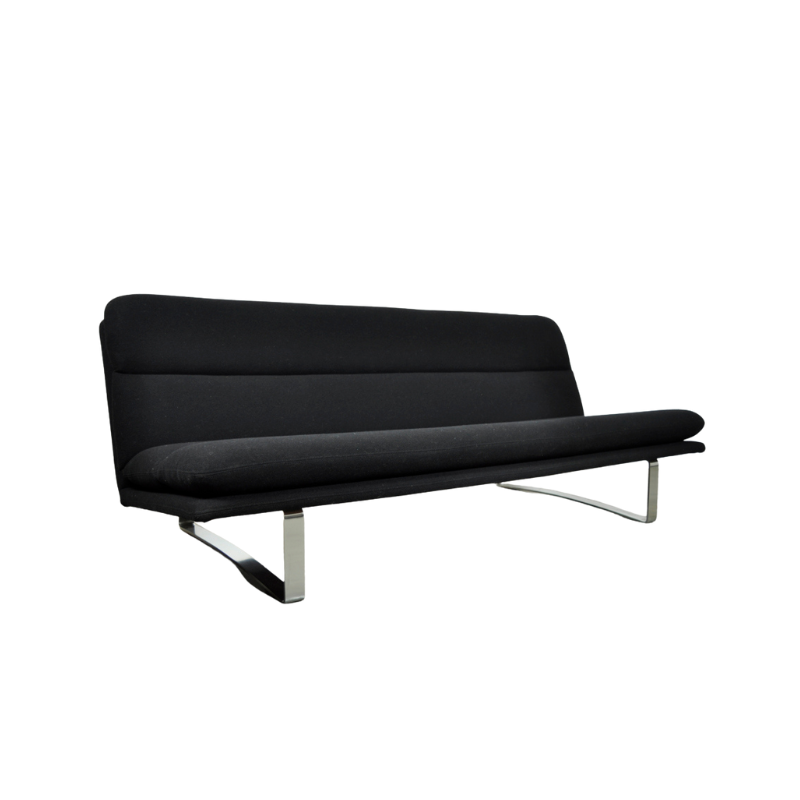Demensions
Sorry it took me so long to measure the dowel dimensions. I have been busy with school. Here are the dimensions of the dowel and then some:
Dowel about 3/4-inch diameter
Length of dowel is about 1&3/4 inches
35 inch length (measured when table was assembled)
14 inches tall (measured when table was assembled)
Thickness of glass 3/4 inch thick
One leg piece is about 29 inches long
One leg piece is about 14 inches tall
I also felt that I should mention that the dowel is set into the leg, so that I can not measure the entire length of the dowel. There is also a considerable amount of wear on the bottom of the legs where they touch the ground, therefore leading me to believe that the table is old. (Maybe just an old repro, which is possible I am assuming)
I also think that a steel dowel would be the strongest, and I have seen the metal dowel connection. That is why I was so curious to see this table with a wooden dowel that looked so old. I thought right away, reproduction when I saw the wooden dowel, but I also thought that I had once read somewhere that Herman Miller used to use a wooden dowel in the IN-50 table. Hence my curiosity and post on the forum. Either way the table looks great, works well, and the price was unbeatable.
I also wanted to mention that SDR brought up a relevant point (at least if you are buying one of these tables second hand) as to which angle to set the legs at. I was a little concerned at first at trying to get the angle just right. I even looked at online overhead pictures to try to get the angle exact. But once I put the glass on the top, the table stabilized (for one, the glass weighs a ton. Much heavier then it looks). While the glass was on, I could lift up part of the top (with some help) and pivot the leg piece that is on the top, to help further stabilize the table.
Squash the Debate
I just got an e-mail from Herman Miller which reads as follows:
Your question regarding an Noguchi table has been forwarded to the Herman Miller Archives. Thank you for contacting Herman Miller.
The Noguchi coffee table was never made with a wooden peg.
If you have any further questions please do not hesitate to contact me.
Best Regards,
Gloria Jacobs
Herman Miller Archives
Tel: 616-654-8862
Fax: 616-654-3597
Thanks for all the posts
not if the DMA has anything to do with it
I was at the DMA (Dallas Museum of Art) today with the gf and I noticed the noguchi table description listed only wood and glass - so I thought - maybe they have one with a wooden dowel OR the DMA made a mistake and forgot to mention the metal. I am going to email (or attempt to) the curator of design there and see what I can dig up. I will post my results if any.
-
that is what I thought as well - but the womb chair right next to it mentioned fiberglass - but I guess that is a main supporting element and although it described the metal as well it did not for example go into detail regarding the feet of it - but you're right there must be some cut off where they decide some smaller details are not necessary.
anything is possible
I would not go on what Herman Miller archives says soley. I think it is possible for little things like that to go overlooked. I don't doubt that an employee could have rigged up something like that for any number of reasons. Even in the Eames design book, which was painstakingly written I have found a major error with a design. They say the Eames 3473 (or aluminum goup) sofa contained a plywood core in the seat and the back. The truth is that ONLY the back contains the plywood core. Perhaps Ray remembered the seat having the plywood as well during prototyping? I don't know, but I do know the seat is only a wooden frame attached to the legs with canvas straps for support ... like a sling. That is a huge oversight. I am sure the Herman Miller archives are capable of such a small oversight if Ray was wrong about one of her and Charles' own designs!
That could
have been a "slip of the pen" -- or of the memory -- but it illustrates the trouble that careless and/or unedited words can cause, to those who are trying to separate fact from fiction. We collectively carry the history of objects that we admire, which involves research and personal observation, weighing the observations and claims of others and relying on official sources and historic records, as well as on those who write histories of these objects. When any of those trusted sources is in error, such error is (understandably) taken as fact, muddying the waters for all who follow.
That is why public correction of error, when discovered, is so important: it allows the train to get back on track. Publishers used to add an insert of "errata," when necessary, to books as they were being printed, for errors that were discovered after the printing plates had been completed. Readers of library books sometimes add their own corrections (hopefully in pencil !), which can be questioned by others but which at least raise the red flag. . .
Dear SDR...
You are so right...The other day I searched in one of the standard publications: What modern was - design 1935-1965, for Elias Svedberg (another thread) I could not find anything but a small chapter on Nordiska Kompaniet, a departement store he designed. Finally I found a small mention of The (short for Theodor) Svedberg, the kemist and Nobel price winner who was also the father of Elias. They were indeed closely related but certainly not the same person...
Especially books sold by the pound seem to create a lot of confusion and yes you wonder who is going to correct it...
Sometimes the
corrections will appear first in reviews of new books; I have only a few random copies of the Journal of the Society of Architectural Historians, published for many years by that organization, and have been informed by the comments and criticisms found in their book review section. One or two of the current crop of architectural periodicals perform a similar service. . .
I'm sure many of us have been instructed by the book review section of the Sunday newspaper (for instance), though we may not trouble to read most of the books themselves !
HM does have a suggested angle
Check out the third photo in this Ebay listing
http://cgi.ebay.com/Herman-Miller-NOGUCHI-Table_W0QQitemZ4459053442QQcat...
Thanks !
In the drawing, it almost appears to be a 45 degree angle; if so, the adjacent photos are hardly good examples !
I've noticed that one of the three facets of the glass top actually has a "flat" (straight) portion; according to the official HM illustration, this is the side opposite the apex of the base triangle. . . I wish I could read the text !
Because of the spacially asymmetrical compositon of the base, the symmetry of the plan view is somehow surprising. A most interesting object -- a sculpture, as no doubt seen by its designer. . .
Dear Wazi
Now that a picture of the real thing is available may I point out the differences with your table?
- the top of the element that touches the glass is straight, yours does not seem to be straight at least on the picture.
The inside of the two end shapes is ever so slightly convex and yours are ever so slightly concave. These are the details that made me conclude that yours is not a real Naguchi....not to mention the black stain, but that could be....wear
If you need any help, please contact us at – info@designaddict.com









